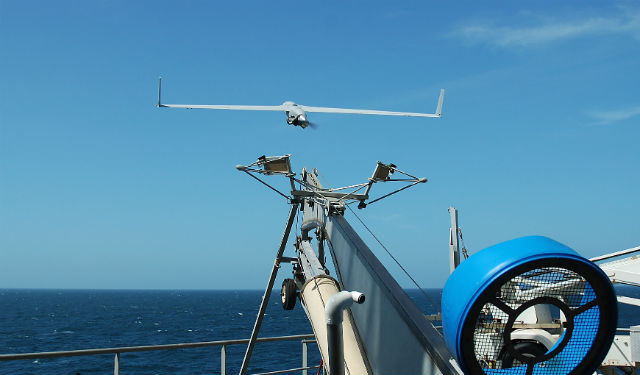In recent testimony before the House subcommittee on border and maritime security, representatives from both the U.S. Coast Guard and CBP told of their organization’s increasing use of aerial surveillance by unmanned aircraft to assist in their battles against illegal drug smugglers.
Rear Admiral William Lee, deputy for operations policy and capabilities with the Coast Guard, told the subcommittee on November 19 that the Coast Guard has established formal partnerships with CBP (to collaborate with CBP’s land-based Predator unmanned aircraft system, or UAS, programme) and the U.S. Navy’s unmanned aircraft programme.
“Incorporating the UAS capability with manned patrolling will improve detection and surveillance activities at a significantly reduced cost when compared to manned aviation,” Admiral Lee said in his prepared testimony. “During a recent proof of concept deployment aboard USCGC BERTHOLF, the ScanEagle UAS proved to be a superb force multiplier in two separate law enforcement cases, resulting in the removal of 570 kilograms of cocaine and the detention of six suspected smugglers.”
Randolph Alles, the assistant commissioner of CBP for the office of air and marine, told the same panel that CBP has identified new smuggling patterns that warrant the increased use of unmanned aircraft systems.
“A considerable threat along our entire maritime border involves the use of ‘pangas’,” explained Alles. “Smugglers use these wood or fiberglass homemade fishing vessels’ relatively high-speed capabilities, small radar signature, and the cover of darkness to attempt to evade detection by surface patrol vessels and patrol aircraft.”
CBP has noticed that smugglers are using larger and larger vessels, sometimes reaching up to 50 feet in length, which can carry multiple tons of contraband for longer and longer distances.
“A recent trend identified off the California coast is a shift from using smaller panga vessels that make quick cross-border trips to beach areas near San Diego to using larger pangas,” Alles noted. “Larger pangas are typically used in the Western Caribbean transit zones from South America, but are now transiting from Mexico farther offshore and farther Northward along the California coast.”
In the recently ended fiscal year, the San Diego Maritime Domain logged 243 smuggling events, of which 123 ended in seizures, of which 81 involved pangas, Alles testified.
“Our response includes increasing the number of Multi-Role Enforcement Aircraft (MEAs) and maritime UAS patrols; the realignment of vessels and personnel in Southern California through surge operations; and the expansion of our partnerships,” he explained.”
Source: Government Security News

